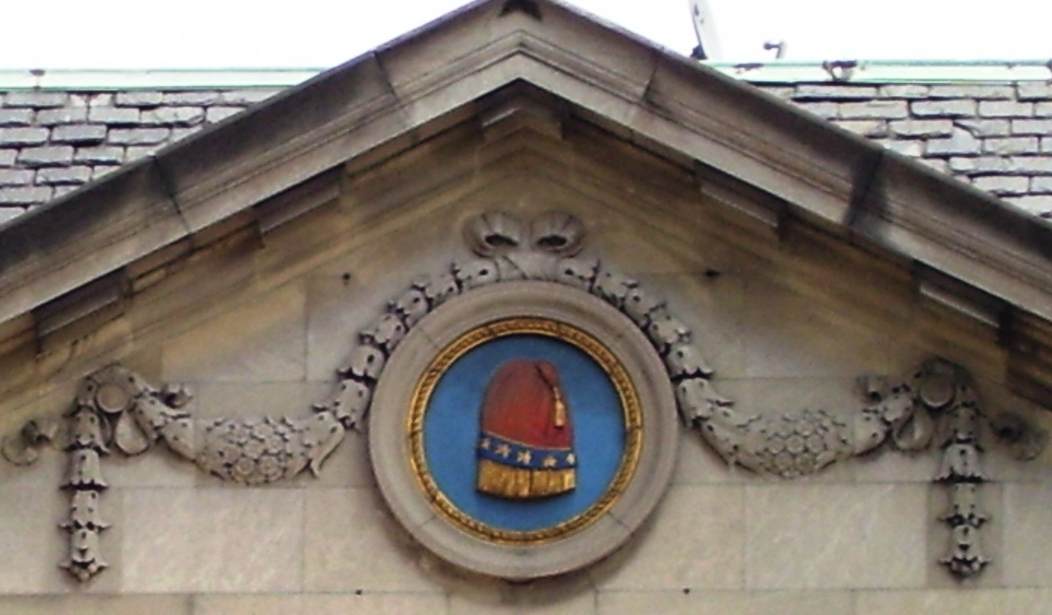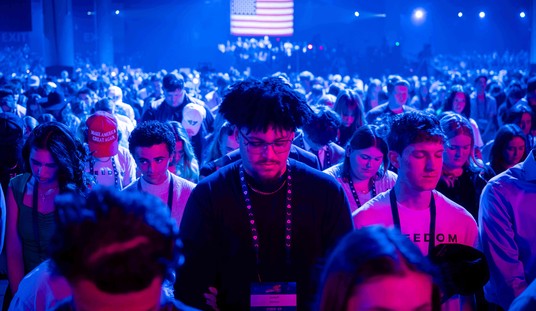This article is the third installment of the VICI Report, a comprehensive multi-part series exploring the sophisticated use of technology in political operations. This series aims to uncover the processes, mechanisms, tools, and technologies used by Democrats to master our political processes and to develop strategies that answer and ultimately defeat their manipulations in 2024 and beyond.
Read the previous article in this series, “Mastering Political Mechanics: A Roadmap of Hard Lessons,” which sets the imperative for technological mastery as a primary component of political success and also lays out what to expect and learn from the VICI Report series.
Introduction
Understanding the interplay between culture and politics reveals how deeply interwoven these elements are in shaping societal outcomes. While cultural shifts undeniably influence political landscapes, it is equally crucial to recognize the strategic role of political processes in shaping cultural norms. This duality sets the stage for a deeper exploration into one of the most influential facets of political mastery: the integration of technology.
The history of technology in politics is a testament to the ingenuity and adaptability of political actors who have leveraged technological advancements to gain and maintain power. From the rudimentary tools of the 19th century to the sophisticated digital strategies of the 21st century, technology has consistently redefined the mechanics of political engagement and control.
Exploring these historical milestones reveals the critical role that technological tools have played in mastering political processes. By examining the development and use of these tools, we can better understand how they have shaped electoral outcomes and influenced cultural landscapes. This analysis highlights the significance of technological mastery in achieving and sustaining political dominance.
Tammany Hall
In the 19th century, political mechanics in the United States involved various methods to influence voting outcomes, including ballot box manipulation and voter intimidation. Tammany Hall, the Democratic political machine in New York City, exemplified "machine politics." This organization, one of the earliest examples of a modern criminal enterprise, manipulated electoral outcomes through patronage, bribery, intimidation, electoral fraud, and even violence.
One of the key strategies employed by Tammany Hall, still commonly practiced today, was the use of "street money." This practice involved distributing funds at the neighborhood level to bribe voters and ensure favorable election results. These funds were often used to pay for votes directly or incentivize community leaders to deliver votes in large numbers. Ballot stuffing, another common tactic, involved filling ballot boxes with large quantities of pre-printed votes. Such methods ensured that Tammany Hall maintained a firm grip on power by manipulating the electoral process at its core.
During this era, pre-printed ballots weren't yet illegal, and both parties regularly printed their own ballots. This allowed them to control the voting process through the distribution of these pre-marked ballots, which voters were expected to cast. This practice fostered the phenomena of "ballot stuffing" and "voting a straight ticket," where voters would need to glue in tiny strips of paper if they wanted to write in another candidate. By controlling the balloting process in this way, political machines like Tammany Hall could ensure their preferred candidates received the majority of votes.
The professionalization of these tactics marked the early days of organized political processes in America. The methods developed during this period laid the foundation for future advancements in political strategy. The use of technology and organized tactics in voting manipulation highlighted the importance of mastering electoral processes to maintain political power. As technology evolved, these strategies became more sophisticated, setting the stage for the modern era of political process mastery.
The Triune Machine
The Progressive Era (1890s-1920s) ushered in a demand for cleaner elections, prompting both major political parties to refine their tactics. This period saw significant efforts to curb electoral fraud and promote transparency. However, these reforms also led to the evolution and sophistication of election manipulation tactics, achieving a high degree of operational mastery.
The rise of unions and ethnic criminal gangs as a Democrat-aligned power base played crucial roles in adopting and perfecting machine politics. These groups effectively controlled political operations for decades by utilizing a combination of patronage, bribery, and coercion. Union activists, in particular, were adept at mobilizing large numbers of voters through organized efforts, while criminal gangs provided the muscle to intimidate opponents and ensure compliance.
The convergence of Democrat politics, union organization, and mafia racketeering created a powerful "three-legged stool" of influence that dominated U.S. political landscapes until the 1960s. This alliance ensured that political power remained concentrated in the hands of a few, with each leg of the stool reinforcing the others. The unions provided a steady base of loyal voters, the political machines ensured strategic planning and execution, and the criminal element enforced discipline and dealt with opposition.
Notable examples of this influence include allegations that mob boss Sam Giancana fixed the vote in Chicago to ensure a victory for John F. Kennedy in the 1960 presidential election. Giancana's control over the city's political apparatus allegedly tipped Illinois, a critical state, in favor of Kennedy. Similarly, Lyndon B. Johnson's political machine in Texas played a decisive role in securing the state for the Kennedy/Johnson ticket, despite a strong showing by Richard Nixon. Johnson's deep-rooted connections and strategic maneuvering were instrumental in overcoming Nixon's appeal.
These examples underscore the extent to which machine politics and organized crime could sway national elections via the mastery of the political mechanics of the period. Despite efforts to clean up the electoral process, the adaptability and resilience of these machines allowed them to maintain control. The methods developed during this period laid the groundwork for future advancements in political strategy, demonstrating the enduring importance of mastering political processes to achieve and sustain power.
New Right, New Media, New Tools
The latter half of the 20th century witnessed a significant shift from traditional political mechanics to media-driven politics, driven by the advent of radio and television. These new media forms became central to mainstream political campaigns, allowing candidates to reach a broad audience quickly and effectively. Franklin D. Roosevelt's fireside chats utilized radio to communicate directly with the American public, shaping public opinion and garnering support. This trend continued with the advent of television, most notably with John F. Kennedy's performance in the 1960 presidential debates. Kennedy's charismatic presence and telegenic appeal contrasted sharply with Richard Nixon's less polished appearance, highlighting the profound impact of television on political success.
The New Right movement in the 1970s and 1980s revolutionized political campaigning through the pioneering use of direct mail activism and fundraising. Leaders like Richard Viguerie and Bruce Eberle leveraged mailing lists to engage millions in political movements, mobilizing support and raising funds efficiently. This method allowed conservative activists to bypass traditional media channels and communicate directly with potential supporters, significantly boosting the reach and impact of their campaigns. A notable example of the power of direct mail was its role in nearly derailing the Carter-Torrijos Treaty, which aimed to transfer control of the Panama Canal from the United States to Panama. The conservative campaign against the treaty demonstrated the effectiveness of direct mail as a tool for activism and fundraising.
This era also saw a marked shift towards the professionalization of political operations. An entire industry emerged around election campaigns and specialized issue advocacy, with consultants, pollsters, and media strategists playing increasingly crucial roles. Campaigns became more sophisticated, employing data-driven strategies to target specific voter demographics and optimize outreach efforts. The use of mainframe computers for data processing enabled these data-driven political strategies, thoroughly outclassing the traditional Democrat/Union/Mafia complex at the national level.
The "big-C" Conservative Movement played a pivotal role in implementing direct mail activism at scale. Organizations founded during this time, such as Morton Blackwell's Leadership Institute, continue to perform valuable training for candidates and activists. The Leadership Institute, in particular, has been instrumental in educating thousands of individuals in the principles of effective political activism and campaign management, ensuring a steady pipeline of skilled conservative leaders.
A notable innovation during this period was the use of video-based training programs by organizations like GOPAC. Spearheaded by Newt Gingrich, these instructional tapes provided Republican candidates and activists with strategic guidance and messaging tactics. Gingrich credited the GOPAC tapes with contributing to the Republican Revolution of 1994, which saw the party gain control of both houses of Congress for the first time in decades. The tapes exemplified the New Right's emphasis on data-coordinated, media-savvy strategies to achieve political success.
This transition to media-driven politics and professionalized campaign operations set the stage for the digital era, where technology continues to play a pivotal role in shaping electoral outcomes and political landscapes.
Data Pioneers
The rise of data analytics in the late 20th century revolutionized political communication and strategy. Early pollsters and the burgeoning advertising industry began to harness the power of data to enhance the efficacy of direct mail appeals and other forms of political outreach. By analyzing voter demographics, preferences, and behaviors, these pioneers could tailor their messages more effectively, ensuring a higher impact and return on investment.
The largely Republican political direct mail fundraisers were instrumental in this transformation. They recognized the potential of data-driven direct mail campaigns for activism and fundraising, particularly within Young Americans for Freedom (YAF) and the broader New Right movement. Their efforts demonstrated how precise targeting and personalized communication could mobilize supporters and generate significant financial contributions.
The adoption of mainframe computers marked a significant technological advancement in political strategy. These powerful machines enabled the processing of vast amounts of data, facilitating sophisticated analyses and targeted outreach efforts. By investing in this expensive technology, political organizations could outperform traditional methods, gaining a competitive edge in campaign management and voter engagement.
This era of data pioneers laid the groundwork for the modern use of analytics in politics. The strategies developed during this time have evolved into the advanced data-driven approaches seen in today's campaigns, where big data and sophisticated algorithms continue to shape electoral outcomes. The early adoption of data analytics not only transformed political communication but also set the stage for the future of political strategy, highlighting the enduring importance of technological innovation in mastering the political process.
Conclusion
The historical trajectory of technology in politics underscores the intricate relationship between innovation and power. From the crude methods of Tammany Hall's machine politics to the sophisticated data-driven strategies of the modern era, each technological leap redefines political engagement and control. The ingenuity and adaptability of political actors in leveraging these advancements highlight a continuous evolution of tactics aimed at mastering the electoral process.
This exploration not only reveals the profound impact of technology on political outcomes but also underscores its role in shaping cultural landscapes. As we look to the future, understanding this history is crucial for anticipating the next wave of technological innovations that will inevitably influence political dynamics. By examining past milestones, we gain insights into the enduring significance of technological mastery in achieving and sustaining political mastery, emphasizing the need for continuous adaptation and strategic foresight in the ever-evolving realm of politics.
Sinistra Delenda Est!
In the next installment of the VICI Report series, we continue our exploration of the history of technology in politics with the impact of the early Internet, the rise of Big Tech, the relationship graph and Big Data, the promise of meaningful marketing, and the dystopian reality of social profiling.
The VICI Report and Project VICI are projects of UpHold America, led by Paul Porter (X:@PaulPorterPVB) and Jason Belich (X:@BelichJason).
The VICI Report series is a culmination of many months of sleepless nights; the product of exhaustive research and analysis into the technologies used in politics by a Democrat adversary excessively skilled at manipulating political outcomes. Your support is critical to the success of this mission. Please visit our website, support our GiveSendGo, or join our Substack to contribute.













Join the conversation as a VIP Member